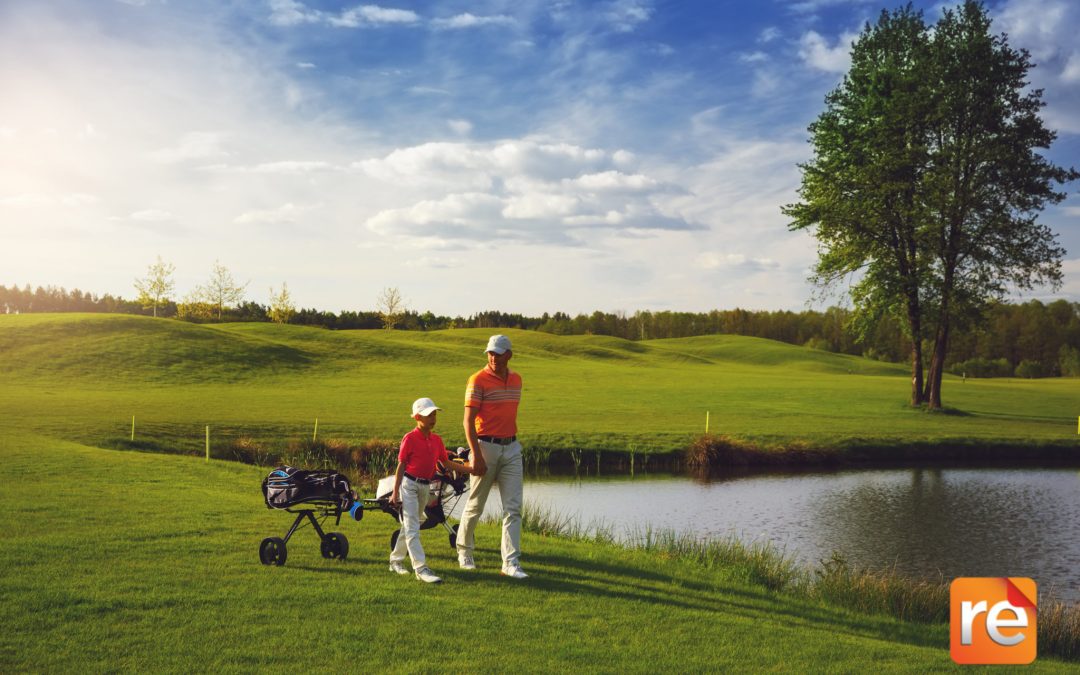Whether it’s the sunny skies we have seen in late April, the recently re-crowned #1 player in the world wearing ‘Sunday-Red’, you’re likely getting very excited for the beginning of the golf season!
Research has shown that golf injuries occur often. To no surprise, the number 1 injury associated with the game of golf is Low Back Pain. Statistics show that 1 out of 2 golfers will experience some type of low-back-pain or injury during their playing career. Why is this so prevalent, you might ask?
Here are a few reasons:
- Bodily physical dysfunction/limitations
- Poor swing biomechanics
- Overuse or excessive practice
- No regular customized exercise program
- Poor nutrition/hydration
- Improper club fitting
Some of the most common injuries golfers experience:
Lumbar (low back) pain is a common symptom in most golfers who stick with the sport over a long period of
time. The repetitive motion, rotation, and strain from the golf swing creates pressure on the discs of the spine. The
increased load and force on the spine are intense enough to damage muscles, joints, discs, and even the ribs.
More than one-third (34.5 per cent) of all injuries among golfers results in low back pain. Some individuals may have
limited flexibility of the trunk/thoracic spine poor ‘core’ muscle strength and endurance or limited hip mobility.
What can you do to prevent an injury?
Before you start heading to the driving range to hit a bucket of balls with your new titanium driver, here are some strategies to prevent a back injury during this season. These suggestions are progressive, meaning the earlier the stage of prevention, the much easier to implement.
Stage 1 (simple remedies)
- Get in shape prior to the season; exercising regularly keeps your body and nervous system active and moving
- Stretch & strengthen your ‘golf’ muscles; (abdominals/core, hips, trunk, shoulders, elbows, wrists)
- Warm-up prior to playing – minimum of 15 minutes
- Consider using a push-cart vs. carrying your clubs
- Have your golf clubs fitted to you
Stage 2 (subtle technique modifications to address)
- Position your knees above the balls of your feet and turn both hips ‘out’ approximately 25-30 degrees.
- Pre-engage your ‘core muscles’ before initiating the back-swing/
Stage 3 (technique changes at the finish position)
- Avoid excessive extension (backward bending) or side bending.
Stage 4 (technique changes during the backswing)
- Focus on turning vs hip ‘sliding’. This may be inhibited by a steeper swing plane, a reverse-pivot weight transfer and weak core/hip muscles.
Stage 5 (changing your swing style)
- Try shortening your swing, using longer shafted clubs
Since low back pain and other golf related injuries are the result of poor technique, taking a lesson from a certified golf professional can be an important 1st step towards injury prevention. If you already have an injury which originated or is aggravated by golf, see a physiotherapist so they can provide personalized advice on appropriate treatment solutions for the specific problems.
What can a physiotherapist offer golfers?
A physiotherapist can assess the individual golfer for range-of- motion, postural alignment, movement patterns,
and golf swing mechanics that need correction. Specific treatment techniques will vary depending on the underlying
problem (e.g., facet or spinal joint irritation, disc herniation, spondylolysis or stress fracture of the spine).
Core stability training is an important part of the rehab program for most golfers.

